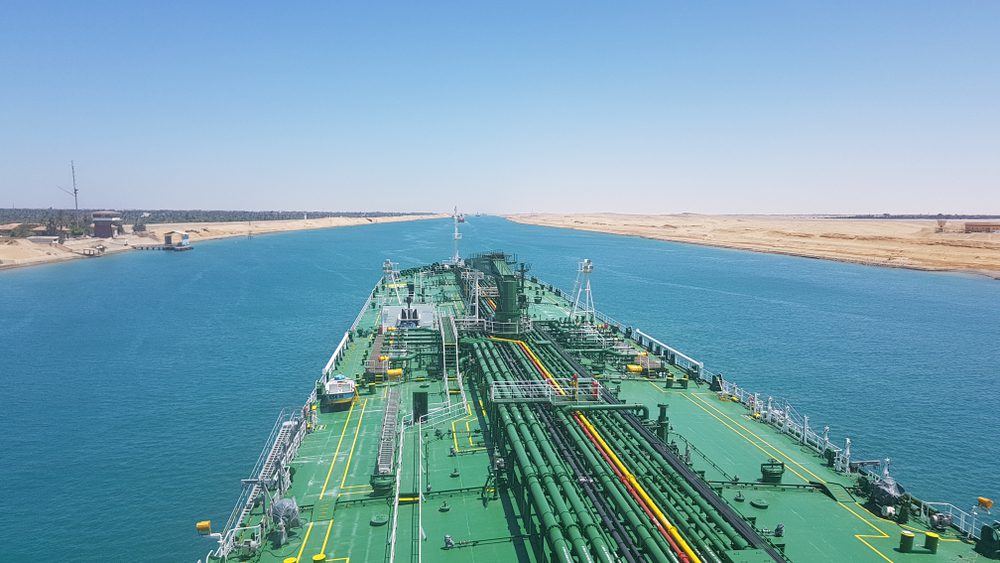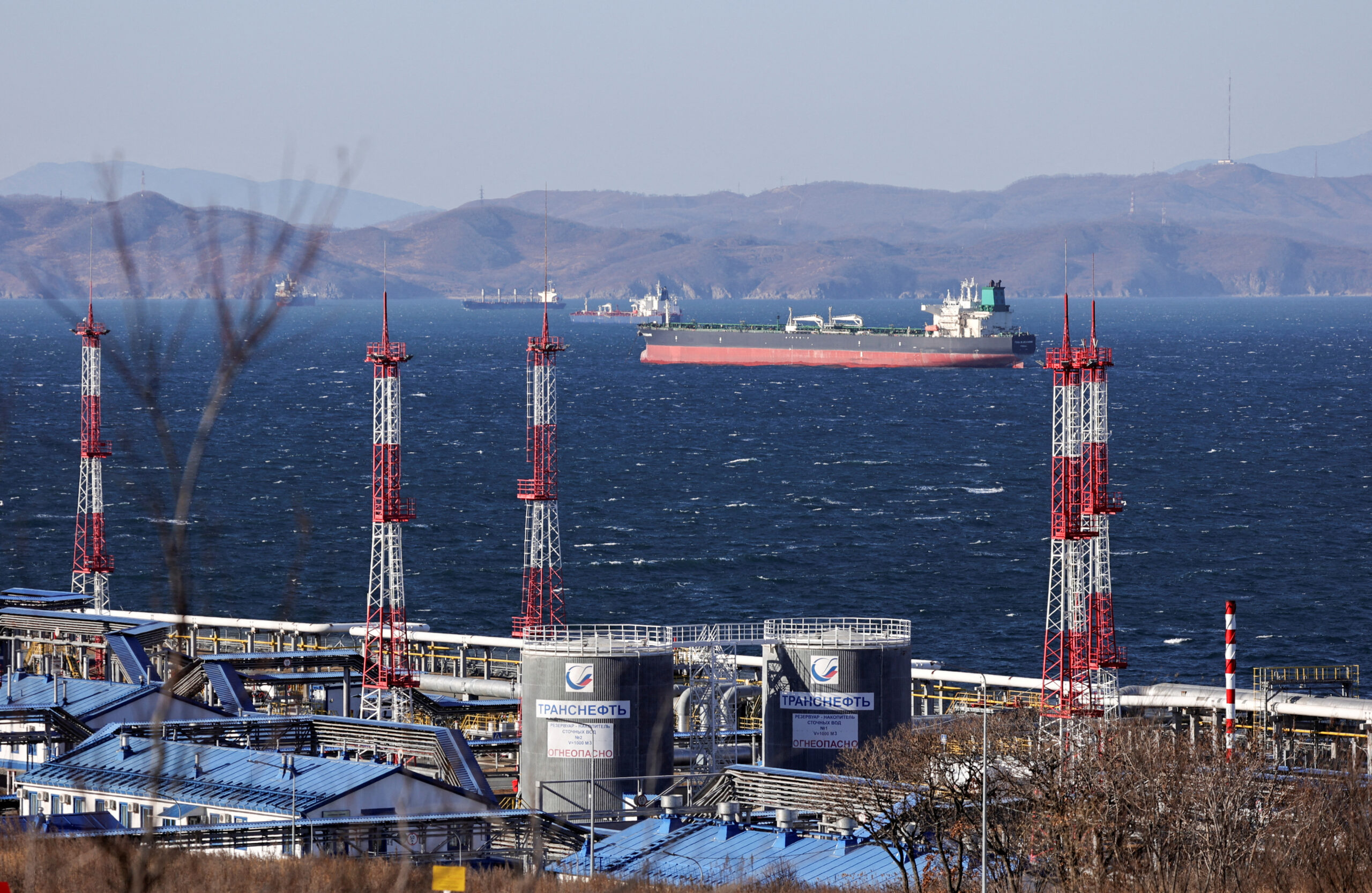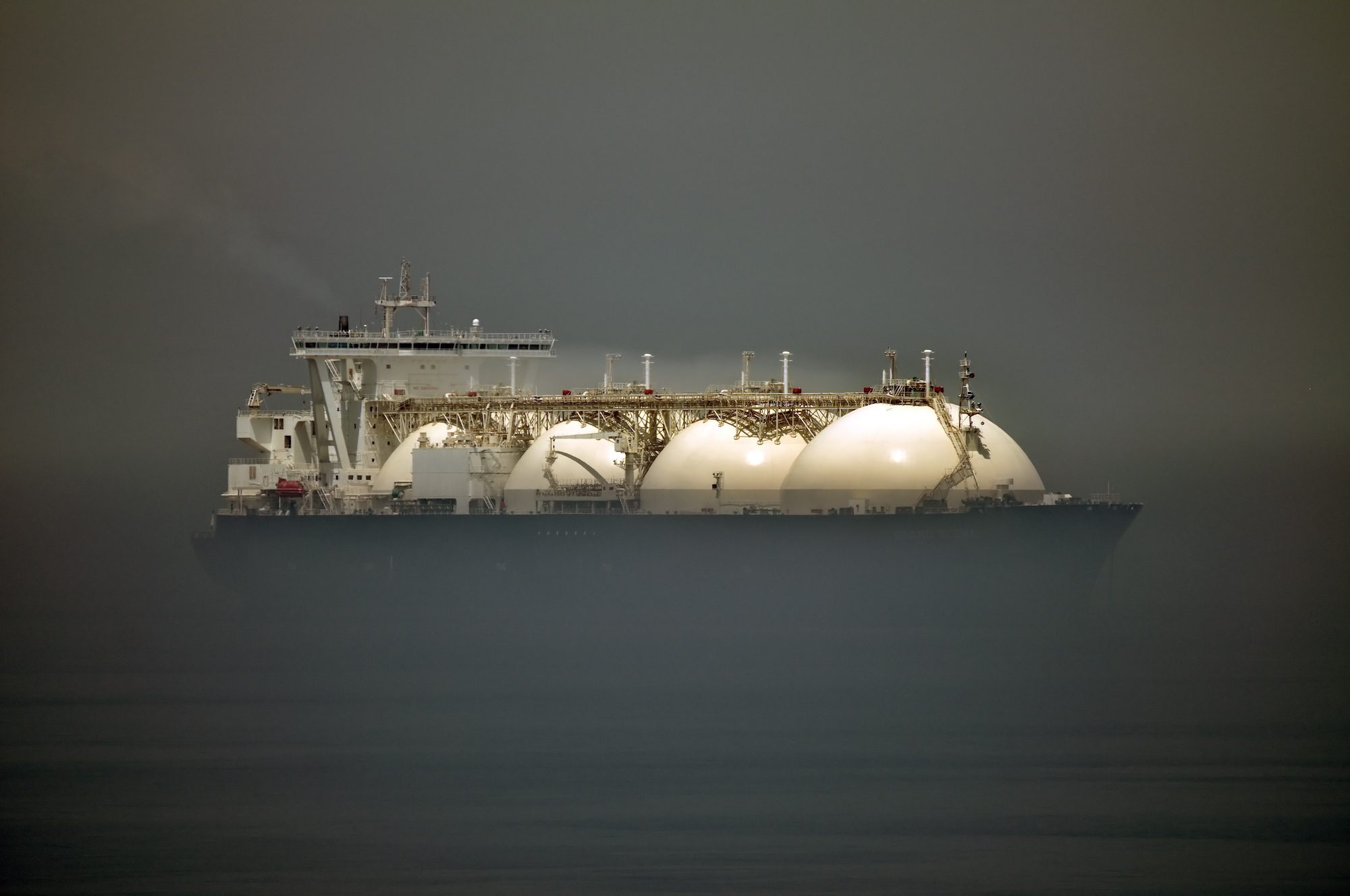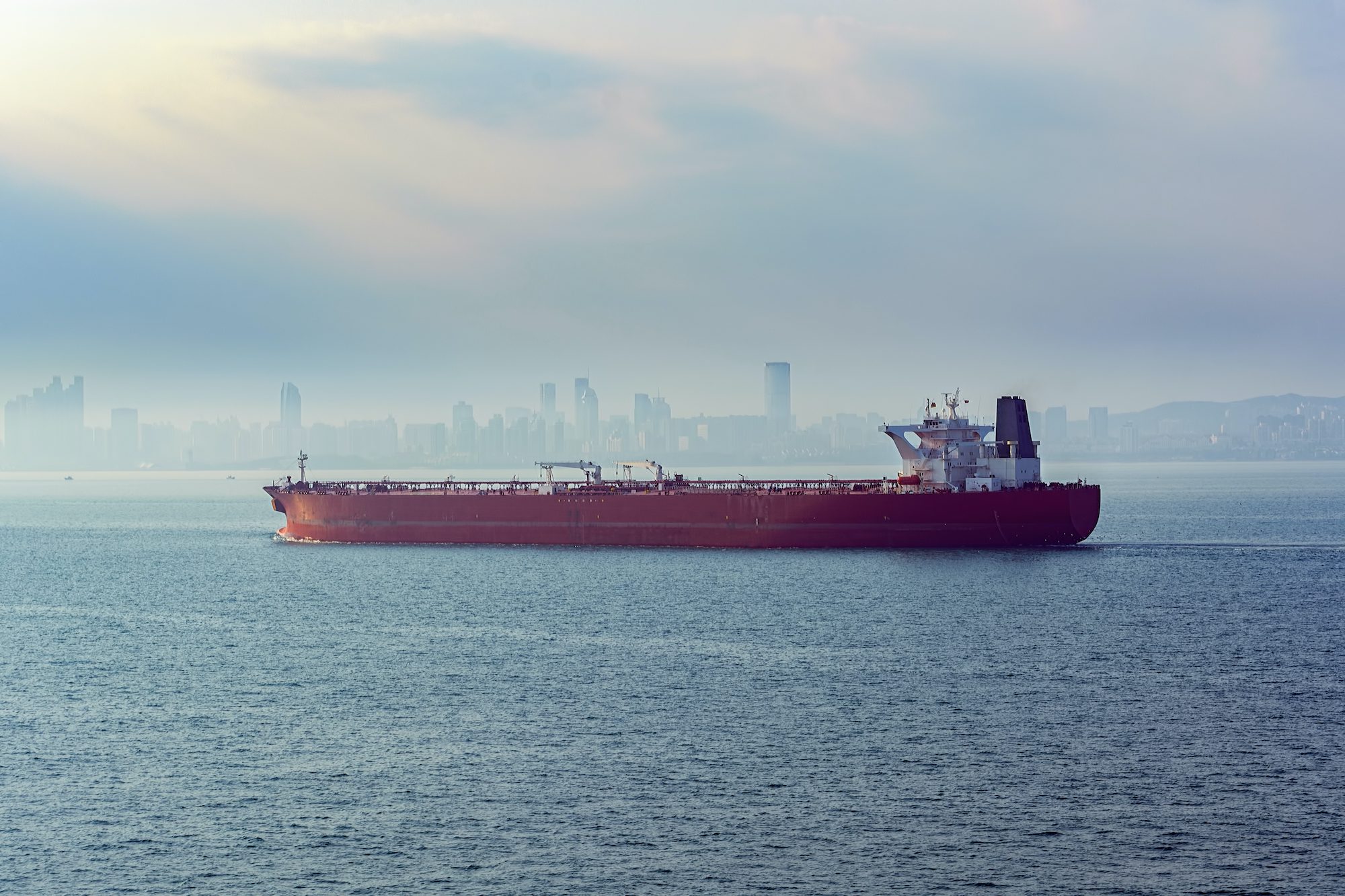By Julian Lee (Bloomberg) —
Russia’s seaborne crude exports from its western ports to Asian countries, predominantly India and China, rebounded to more than 1 million barrels a day and could rise higher when destinations are finalized. In the east, flows of the Sokol grade have dried up with sanctions starting to bite.
Overall crude shipments were virtually unchanged in the seven days to May 13 though, as European Union nations continue to wrangle over a planned ban on Russian oil imports in the wake of the country’s invasion of Ukraine.
A total of 35 tankers loaded about 24.9 million barrels from Russian export terminals, according to vessel-tracking data and port agent reports collated by Bloomberg. That put average seaborne crude flows at 3.55 million barrels a day, down by less than 0.5% against 3.56 million barrels a day in the week ended May 6.
Long-haul voyages were a feature of the latest data. Eight tankers that loaded crude at Russia’s western ports in the week showed destinations in Asia, with another four heading for the Suez Canal. That’s up from a combined five vessels in the previous week.
Despite stable flows, Moscow’s revenue from export duty slipped slightly, with the full week’s shipments attracting the lower May level of export duty, compared with six out of the seven days in the previous week. At current rates of crude oil export duty, the week’s shipments will have earned the Kremlin about $169 million; that’s $7 million less than the previous week and the lowest weekly figure in seven weeks.
Russia exports crude from four main areas: the Baltic Sea in northwest Europe, the Black Sea, the Arctic, and terminals on its Pacific Coast.
The weekly shipment figures can swing depending on the timing of when tankers depart, which is also heavily influenced by the weather at ports — as has been the case for the past several weeks.
Flows of Urals crude from terminals in the Baltic rose in the week to May 13 by 313,000 barrels a day, or 20%, reversing the previous week’s loss. The increase was partly offset by lower volumes from the Black Sea port of Novorossiysk and from Murmansk, which handles crude produced along Russia’s Arctic coastline. Daily shipments from Novorossiysk fell by 40,000 barrels and from Murmansk by 72,000 barrels.
Meanwhile, shipments from the country’s three eastern terminals on its Pacific Ocean coast fell sharply, giving up most of the previous week’s increase, falling by 205,000 barrels a day, or 20%. Shipments of Sokol crude from the Sakhalin-1 project appear to have halted.
Opinions are divided on whether the European Union will succeed in imposing a ban Russian oil imports in the face of continued opposition from Hungary. Some EU nations are saying it may be time to consider delaying a push to embargo Russia’s supplies so they can proceed with the rest of a proposed sanctions package. But Germany plans to stop importing the country’s oil by the end of the year even if the EU fails to agree on a ban.
The EU’s proposal seeks to end crude oil purchases over the next six months and refined fuels by early January. The bloc offered Hungary and Slovakia until the end of 2024 to comply with the sanctions and the Czech Republic until June of the same year as they are heavily reliant on Russian crude, but that has not been enough to placate Hungary. Talks are continuing.
A proposed ban on EU-owned vessels transporting Russian oil to third countries is expected to be dropped in the face of opposition from Greece and Cyprus, who want the proposal delayed until after G-7 countries adopt similar measures. But a prohibition on insurance is still in the works and would remain a significant impediment to exports.
While self-sanctioning of Russian crude by European companies has diverted flows to Asia, so far it is having little impact on the overall level of crude shipments. That may change in the coming week after EU regulations prohibiting dealings with Russian state energy companies came into effect on May 15.
A bigger impact on Moscow’s earnings from crude exports has come from the drop in the level of export duty charged on each barrel shipped overseas as of May 1. Crude oil export duty is set at $49.60 a ton, equivalent to about $6.81 a barrel, in May. That’s down from $61.20 a ton, or $8.30 a barrel in April. Duty rates will fall by another 10% in June, reflecting lower prices obtained for Urals crude over the past month.
The number of cargoes shipped from Russian ports rose by one to 35 in the week to May 13 compared with the previous seven days. More ships departed from ports in the Baltic, while shipments from the Black Sea and Murmansk in the Arctic were stable. In the east, the numbers of tankers leaving Kozmino and De Kastri both fell.
Shipments of Sokol crude from the Pacific port of De Kastri have ground to a halt. The last two cargoes on the April program were missed and there was only one loading in the first 13 days of May. Three Russian-owned shuttle tankers that regularly carry the grade are anchored empty off the loading terminal.
Crude Flows by Region
The following charts show the destinations of crude cargoes from each of the four export regions. Destinations are based on where vessels signal they are heading at the time of writing, and some will almost certainly change as voyages progress.
The volume of crude on ships loading from the Baltic terminals at Primorsk and Ust-Luga rebounded in the second week of May. The volumes on tankers showing destinations in Asia and the Mediterranean also rose, while shipments to traditional buyers in northwest Europe fell back to equal their lowest in seven weeks.
Crude shipments from Russia’s Baltic ports are going according to plan. All cargoes scheduled to load at Primorsk and Ust-Luga during the week to May 13 were shipped within a day of their planned loading dates.
Six tankers completed loading at Novorossiysk in the Black Sea in the week to May 13, unchanged from the previous week. Shipments to Asia were also unchanged, with two tankers heading out of the Black Sea/Mediterranean region. The small drop in shipments comes from smaller cargo sizes.
Shipments from Novorossiysk were almost back in line with the port’s loading program by the end of the week after a gap in the plan allowed a backlog of cargoes to be cleared.
Three ships loaded from floating storage facilities at Murmansk. Two are headed to Rotterdam and the other to Lukoil’s refinery in Sicily. All three of the most recent cargoes to load from Lukoil’s storage unit have been kept within the company’s own refining system.
Crude flows from Russia’s three eastern oil terminals slipped during the week to May 13.
Six tankers loaded ESPO crude at Kozmino, one fewer than during the previous week. That’s still pretty much in line with the program to ship a record 33 cargoes in May.
There were no shipments from De Kastri, which handles Sokol crude from the Sakhalin 1 project. Three Sovcomflot tankers have been anchored empty off the oil terminal since late April, with just one cargo loaded in the first week of May and delivered to Dalian in China. Six cargoes that should have been shipped since late April, according to a loading program seen by Bloomberg, have been missed.
A second non-Russian tanker that arrived off Sakhalin Island to load a cargo of Sakhalin Blend crude left empty, vessel-tracking data show. Two Sovcomflot ships that would normally carry the grade are empty near the terminal.
Long Voyages and Cargo Transfers
The number of tankers heading from Russia’s western export terminals to destinations in Asia soared in the week to May 13. Eight ships headed to India or China — via the Suez Canal — with another four showing their destinations as Port Said or Suez, both regular signals for ships intending to transit the Suez Canal. Two more are signaling Gibraltar and are showing “for orders.”
Previous ships initially showing a destination of Gibraltar have either conducted ship-to-ship transfers off the Spanish north African town of Ceuta, continued on to the Suez Canal, or made deliveries in the Mediterranean region, only changing their destination signal after entering that sea.
There was one observed ship-to-ship transfer of Russian crude in the week to May 13. The Aframax tanker Vergios completed the transfer of its cargo to the Russian-owned tanker Adygeya off Ceuta on May 13. Adygeya is due to arrive at Vadinar in India on May 27.
A second cargo of Russian Urals crude arrived at Fujairah on May 13. In addition, the Suezmax tanker Kriti Breeze, carrying a cargo of ESPO crude from Kozmino to Fujairah, passed through the Strait of Malacca on May 15 and has updated its expected arrival date in Fujairah to May 24, according to the ship’s destination signal.
The Aframax tanker Nissos Delos remains anchored off the Sri Lankan port of Colombo, where it has been since April 25, but does not appear to have discharged any of its crude.
A cargo of about 85,000 tons of Siberian Light crude was delivered to Ashkelon in Israel by Azerbaijan’s state oil company, Socar. The crude was loaded at Novorossiysk on May 9 and arrived in Israel on May 15.
Note: This story forms part of a regular weekly series tracking shipments of crude from Russian export terminals and the export duty revenues earned from them by the Russian government.
Note: Bloomberg uses commercial ship-tracking data to monitor the movement of vessels. Ships can avoid detection by turning off on-board transponders, as has been done widely by the Iranian tanker fleet. There is no evidence yet that this is being done by crude oil tankers calling at Russian ports.
Note: Destinations are those signaled by the vessel and are monitored until the cargo is discharged. Destinations may change during a voyage, even under normal circumstances, and the final discharge point for the cargo may not be known until that port is reached.
Note: Cargo volumes are based on loading programs, where those are available, and on a combination of the ship’s capacity and its depth in the water where we have no other information.
© 2022 Bloomberg L.P.

 Join The Club
Join The Club











